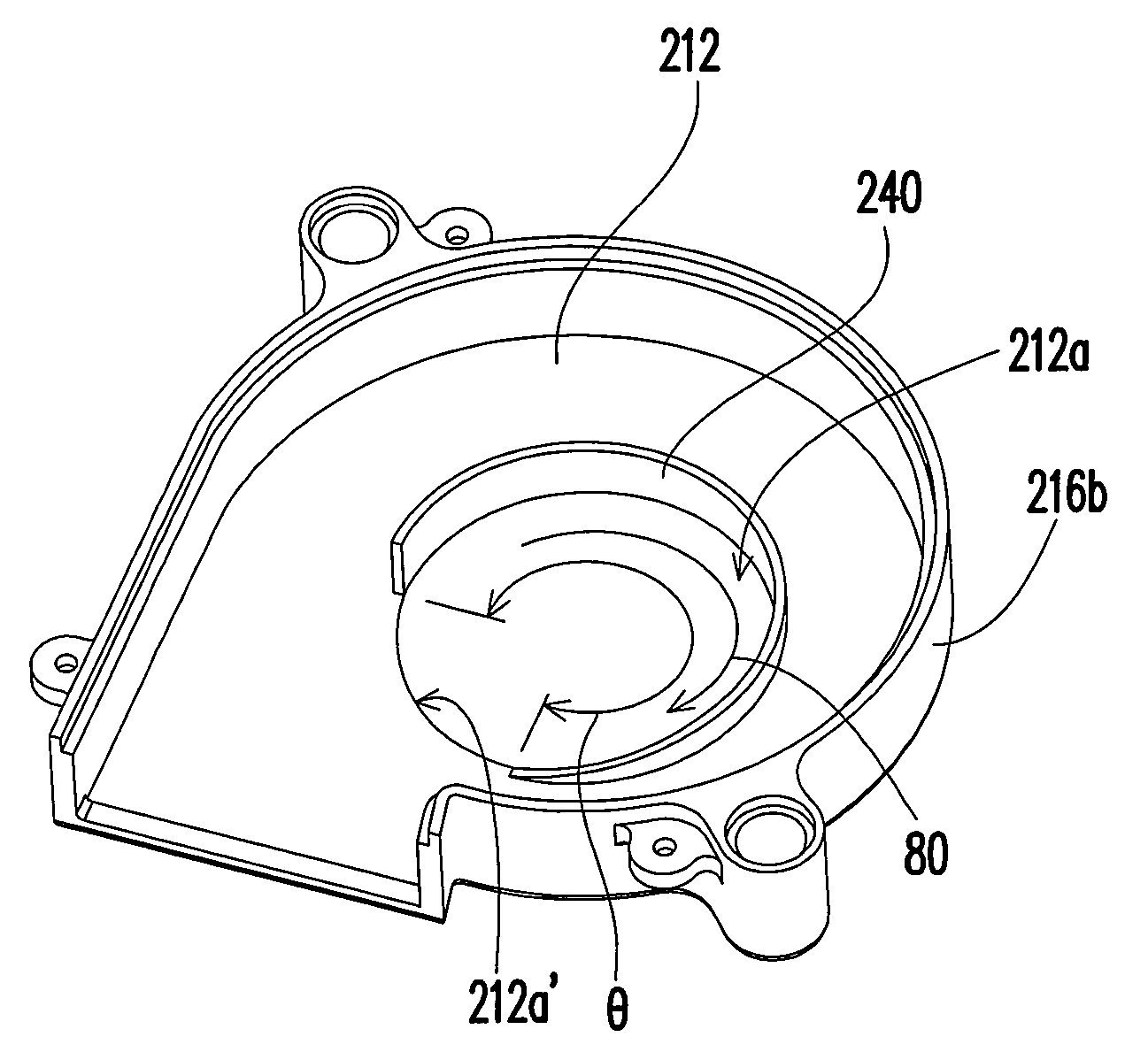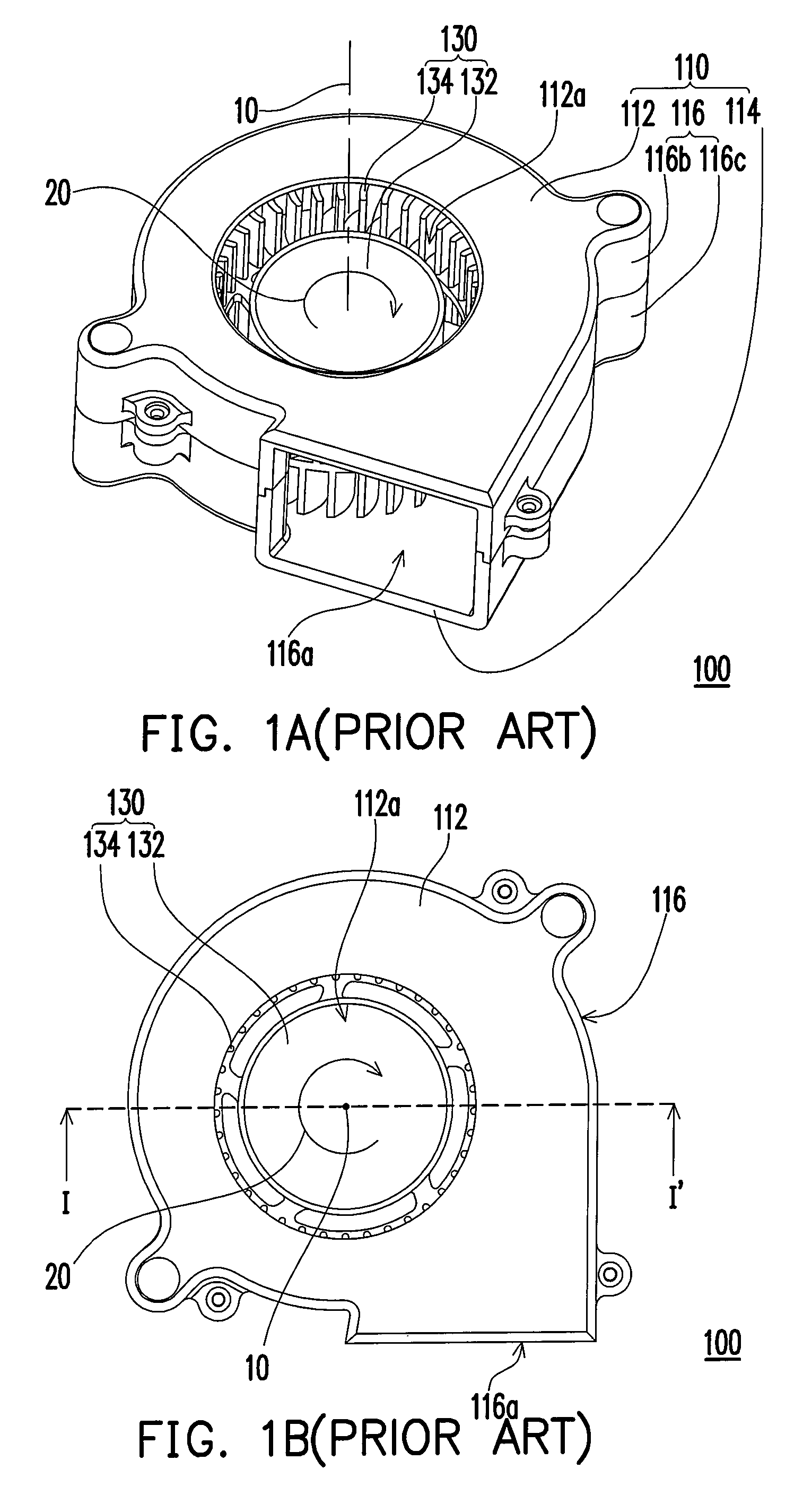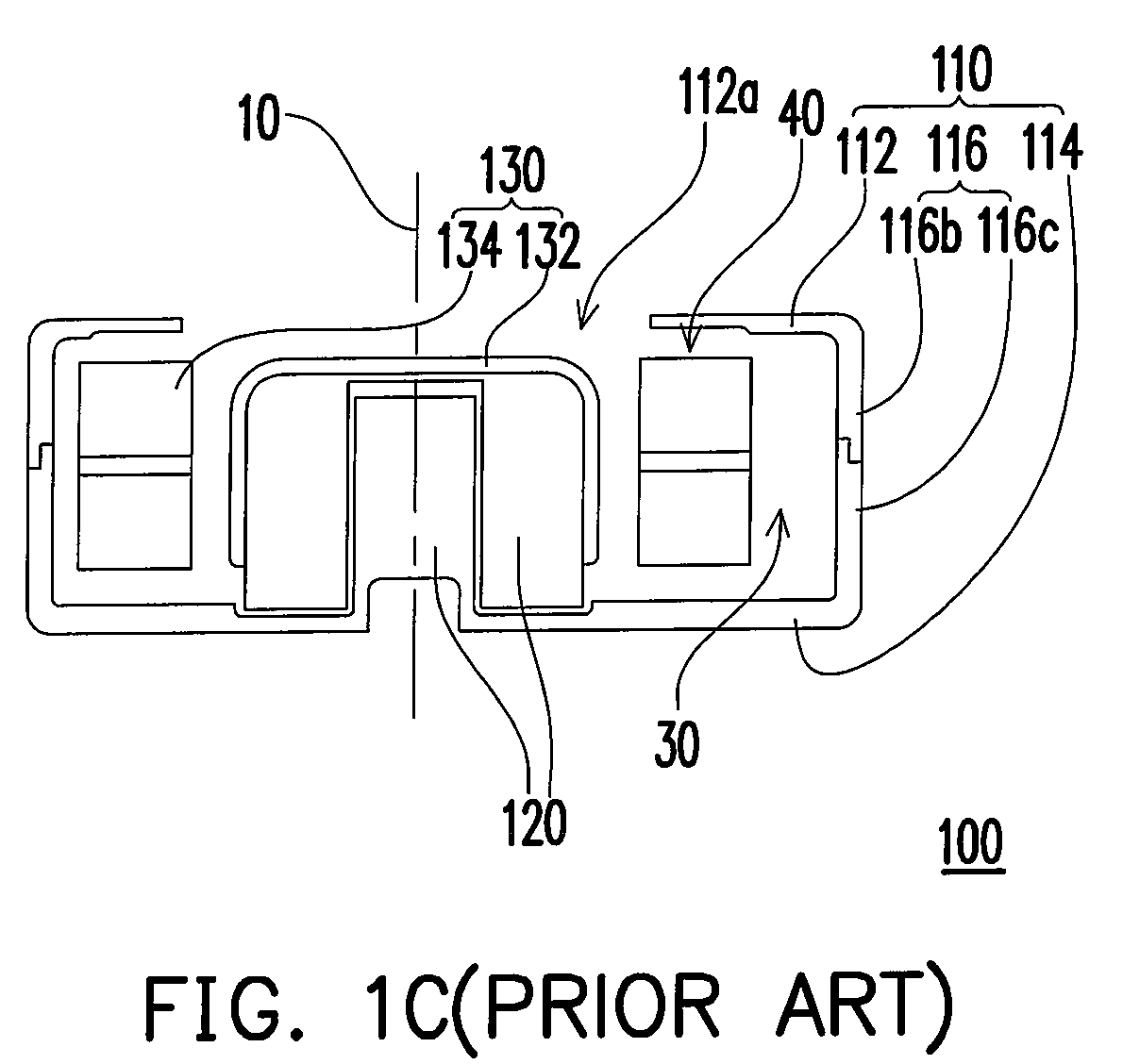Centrifugal blower
a centrifugal blower and centrifugal technology, which is applied in the direction of liquid fuel engines, vessel construction, marine propulsion, etc., can solve the problem that the air inlet air intake rate is not easily affected, and achieve the effect of high operation efficiency
- Summary
- Abstract
- Description
- Claims
- Application Information
AI Technical Summary
Benefits of technology
Problems solved by technology
Method used
Image
Examples
first embodiment
The First Embodiment
[0027]FIG. 2A is a schematic perspective view of a centrifugal blower according to a first embodiment of the present invention, FIG. 2B is a schematic top view of the centrifugal blower of FIG. 2A, and FIG. 2C is a schematic cross-sectional view of the centrifugal blower of FIG. 2B taken along the line I-I′. Referring to FIGS. 2A, 2B, and 2C, a centrifugal blower 200 in the first embodiment includes a casing 210, a motor 220, a fan structure 230, and an anti-leakage element 240. The casing 210 has a top portion 212, a bottom portion 214, and a side wall 216. The top portion 212 has an inlet 212a. The side wall 216 respectively connects the top portion 212 and the bottom portion 214 and has an outlet 216a. The side wall 216 is formed in the following manners. One side 216b connected to the top portion 212 is engaged or connected in other manners with the other side 216c connected to the bottom portion 214. Or, the side wall 216 directly formed on the bottom portio...
second embodiment
The Second Embodiment
[0035]FIG. 3 is a schematic cross-sectional view of a centrifugal blower according to a second embodiment of the present invention. Referring to FIG. 3, the difference between the second embodiment and the first embodiment mainly lies in that the bottom portion 314 of the casing 310 of the centrifugal blower 300 of the second embodiment has another inlet 314a, and the centrifugal blower 300 further includes another anti-leakage element 350. The anti-leakage element 350 extends from at least part of an edge 314a′ of the inlet 314a to the interior of the casing 310, and partially covers parts of the blades 334.
[0036]In the second embodiment, a maximum distance d2 of the anti-leakage element 340 extending to the interior of the casing 310 with respect to the top portion 312 is greater than or equal to one eighth of a height h2 of each of the blades 334 and smaller than or equal to a quarter of the height h2 of each of the blades 334. A maximum distance d3 of the an...
third embodiment
The Third Embodiment
[0038]FIG. 4 is a schematic cross-sectional view of a centrifugal blower according to a third embodiment of the present invention. Referring to FIG. 4, the difference between the third embodiment and the first embodiment mainly lies in that the profile of each of the blades 434 of the centrifugal blower 400 of the third embodiment is different from that of each of the blades 234 of the centrifugal blower 200 in the first embodiment. It should be noted that the anti-leakage element 440 extends to the interior of the casing 410 corresponding to the profile of each of the blades 434.
[0039]To sum up, the centrifugal blower according to the embodiments of present invention at least has one or part of or all of the following advantages.
[0040]1. The anti-leakage element of the present invention extends from at least part of the edge of the inlet to the interior of the casing, so when the centrifugal blower of the present invention operates, the air pressurized by the bl...
PUM
 Login to View More
Login to View More Abstract
Description
Claims
Application Information
 Login to View More
Login to View More - R&D
- Intellectual Property
- Life Sciences
- Materials
- Tech Scout
- Unparalleled Data Quality
- Higher Quality Content
- 60% Fewer Hallucinations
Browse by: Latest US Patents, China's latest patents, Technical Efficacy Thesaurus, Application Domain, Technology Topic, Popular Technical Reports.
© 2025 PatSnap. All rights reserved.Legal|Privacy policy|Modern Slavery Act Transparency Statement|Sitemap|About US| Contact US: help@patsnap.com



